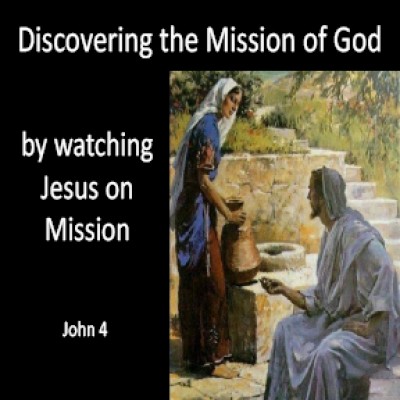Consider the expectations which surrounded a young man from Nazareth. He was introduced as no less than “The Lamb of God who takes away the sin of the world!” (John 1:29). We’re so familiar with the text, but it should take our breath away! Can you imagine? He “takes away the sins of the world”?! In that introduction we find the theme of TCC’s mission emphasis. God Almighty is on a mission. But exactly how will this Jesus become the Lamb of God for the world? (John 4:4-10).
The Lamb of God stepped across a border to bring a message to an unlikely group of people. Samaria was a few miles away—if he couldn’t make it to Samaria and remove the sins from those living just across the river, he’d better give up on reaching the entire world! The world is full of borders and barriers and distinctions and challenges, and this is one the disciples didn’t want to cross. But Jesus crossed the border and quickly found himself talking with an interesting figure…a woman at the well. Jesus intentionally crossed cultural, religious, and gender divides, stepping across multiple barriers. In doing so he models for us the task of reaching the world. Barriers existed then; they still do. Some are physical, some cultural, some are religious, some spiritual. Reaching the world implies crossing those frontiers. It involves pushing through the emotions that accompany those obstacles.
After talking about water, it was time to turn the conversation. That’s a tactic I’ve observed in my Savior; the most important question is WHO? Who is Jesus Christ? Jesus turned the conversation to deeply personal matters: “Go, call your husband and come here.” (V. 16). What an artful answer the woman gives: “I have no husband.” But Jesus doesn’t stop there, he moves deeper to an area of discomfort (v. 18). Her life was marked by some unfortunate choices. (She had had five husbands, and was not married to the man she currently lived with.)
“Sir, you are a prophet.” she retorted. It’s important to note that in the Samaritan view there had only been one Prophet—Moses—and the next prophet who would show up was supposed to be the Messiah (Deuteronomy 18:15). Jesus was bringing to light things she preferred to hide, so she deflected the conversations (v. 20). You’ve seen this tactic: change the subject to something more comfortable. Conclusion: “Sir, we are too different.” Are we not the same today? Raise a spiritual topic, and people move toward topics that divide rather than illuminate. Perhaps the easiest thing of all to talk about is the religious differences that separate.
But Jesus chose not to follow her train of thought (v. 21-23). The Father is seeking worshipers, and the Son crossed borders to find them. They’re calling us into a global celebration! And the place of worship doesn’t matter! The pivot point of this text is “I am He. I am the One sent by God.” And look at her growing faith: “You are a Jew.” (v. 9). “Sir” (term of honor) (v. 11). “You are a prophet (and there aren’t many)” (v. 19). “Could this be the messiah?” (v. 29), finally, “Savior of the world.” (v. 42). What follows is a very powerful ending to a powerful story (v. 39-43). We watch Jesus press through borders and barriers with great intentionality. And finally we see all of the barriers fall away: Jews stayed in a Samaritan village, and Samaritans believed in a Jewish Messiah!
The barriers still stand today; impertinent conversations still repeat themselves. But Jesus is pressing on to be the Savior of the World. And the celebration of knowing Him, loving him and being united with Him throughout all eternity touches every tongue, tribe and nation. It extends beyond limitations and traditions. It presses on. That is God’s plan.


